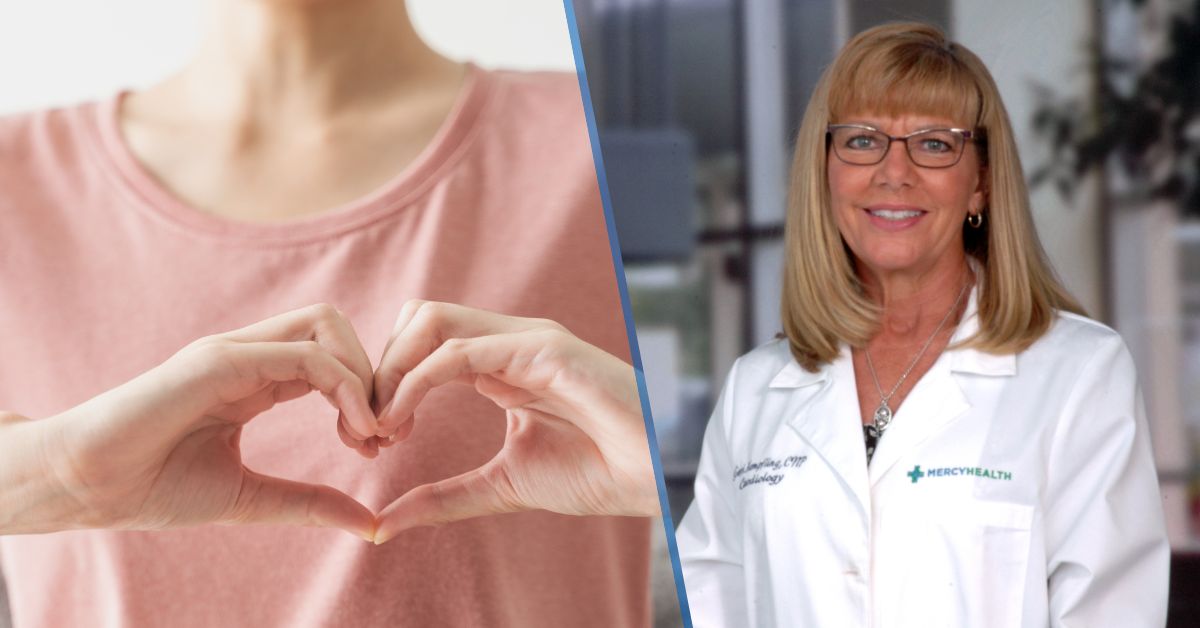Learn to manage high cholesterol with these easy food swaps
Understanding cholesterol and why it’s good and bad for you is a common but important question. Everyone makes cholesterol in their livers. The fatty, waxy substance is found in your cells. Your body needs it to make hormones and use vitamin D. Your liver produces enough cholesterol. Certain foods like meat, eggs, dairy and some oils create excess cholesterol in your body. Too much cholesterol may contribute to the development of heart disease and high blood pressure.
Types of cholesterol
You’ve probably heard there’s good and bad cholesterol. And, there are triglycerides to think about. To clear up the confusion, here are the differences:
- Triglycerides, which are types of fat, make your bad cholesterol buildup worse in your artery walls.
- Good cholesterol, or HDL, picks up excess fat and takes it to your liver to process and eliminate from your body.
- Bad cholesterol, or LDL, travels around in your blood. It builds up as plaque on the walls of your arteries. This reduces blood flow to your heart.
It helps to understand the types of cholesterol because your test numbers reflect all three. For example, you can have high good and bad cholesterol. That means you want to focus on reducing the high bad LDL but not the high good HDL.
What your cholesterol test means
For years, you probably focused on your total blood cholesterol number. Guidelines still say that anything over 200 total cholesterol is too high. Take a deeper look at your test scores with these guidelines.
- Good cholesterol, or HDL, should be 60 or higher for adequate heart protection.
- HDL at 40 or lower is too low and can be harmful to your heart.
- Bad cholesterol, or LDL, at less than a range of 100 to 129 is good for your heart.
- LDL in the range of 130 to 159 is borderline high.
- LDL in the range of 160 to 189 is high.
- LDL above 190 is extremely high and dangerous for your heart.
Your tryglyceride level is important, too. A normal level is 150. Around 200 is borderline high, and over 200 is dangerous to your health.
Managing high cholesterol with diet
Cholesterol-lowering medications can help. Your diet is also of serious importance. The goal is to eat to protect your heart by eating heart-healthy foods. Doing this can reduce your bad LDL cholesterol levels. It can also reduce inflammation and improve your blood pressure readings. Try to stick to these general eating habits:
- Add whey protein into yogurt, milk or smoothies.
- Reduce saturated fats found in full-fat dairy and red meats.
- Eat omega-3 fatty acids in salmon, mackerel, herring and walnuts.
- Increase your fiber by eating lots of beans, apples, pears and oatmeal.
- Eliminate trans fats found in fast foods, processed foods and store-bought cookies, crackers and cakes.
It helps to know more specifically which foods to drop and which ones to add into your diet.
Simple Food Swaps for high cholesterol
It just takes a couple of quick and easy switches and food substitutions to make a big difference in your cholesterol levels. Try these delicious swaps:
- Nuts instead of croutons
- Popcorn instead of chips
- Avocado oil over vegetable oil
- Greek yogurt instead of sour cream
- Ground turkey instead of ground beef
- Quinoa flakes instead of other cereals
- Hummus instead of fatty, creamy dips
- Dark chocolate instead of milk chocolate
- Canadian bacon instead of regular fatty bacon
- English muffins instead of bagels, croissants or muffins
- Vinegar and lemon juice instead of creamy salad dressings
There are plenty more food swaps to manage your high cholesterol. Don’t worry; you won’t get bored with eating healthy. In addition to eating right, exercise most days of the week to help raise your good HDL cholesterol. Losing weight and stopping your smoking habits can also help put you in your best shape.
Are you concerned about how to manage your good and bad cholesterol? We’re here for you. Visit mercy.com to get more guidance from a physician near you today.






